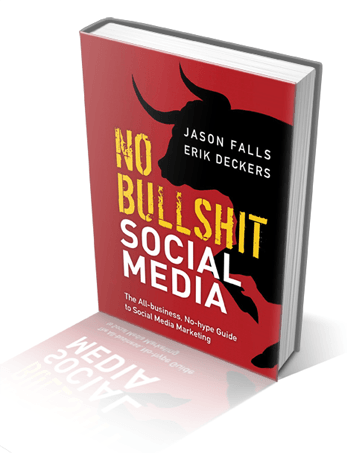 Three upset friends online using a laptop with problems in a coffee shop
Three upset friends online using a laptop with problems in a coffee shop
Social media is a double-edged sword. We love it because it gives everyone a platform and a voice, but it also enables bad news and bad press to travel farther, faster. Managing social media presence for a company can be a fine line to walk, because you have to be careful not to offend or misconstrue, and always represent your brand effectively.
However, you can’t be afraid of social media. Don’t walk away from platforms like Twitter and Facebook because of complaints and bad reviews. Instead, look at these situations as a chance to re-engage with your audience and bring them closer than ever before. If you learn to manage it correctly, social media can be a huge positive for your brand, especially if you deal with complaints effectively. Here’s four of our favorite strategies for handling social media complaints.
Prepare for the worst

Examples Of The Good, The Bad & The Ugly Of Customer Service On Social Media!
Expect that the negative review or social media comment is a question of “when,” not “if.” Brainstorm with your team to figure out how to handle these situations before they happen, and set the process. Generally, your response should include:
- A “thank you” to the customer for their opinion
- An apology for the inconvenience or the problem(s)
- A request for them to send you a private message, if the problem should be solved in real-time
Try to respond to these types of messages within 15 minutes or, if that’s not possible, under an hour. And don’t over-formalize any of it. Remember, this is social media — you can keep it short and sweet.
Also, don’t forget to follow up and fix the problem. A great way to gain word-of-mouth recognition is to go the extra mile for customers who may feel wronged and offer them a gift or a discount. If you need help managing and responding to reviews, take a look at reputation management software.
Take it offline

How to Handle Negative Feedback in Social Media Like a Pro
It’s easy for text to be taken the wrong way or misconstrued. A customer might misunderstand your tone, or you might have an explanation that needs more than 140 characters. For these reasons, the right thing to do after identifying a social media complaint might be to take it offline and ask them to call you or email you instead.
Having a customer reach out over phone or email also lets your trained customer service reps respond, rather than asking your social media manager to.
There are even technologies out there that help empower your customer support center to respond directly to complaints on social media. Omni-channel platforms let reps in a cloud contact center engage with social channels. For example, cloud contact center software can be used for inbound and outbound calling, including omni-channel features that allow customer service reps to track customer complaints received via social media.
Know your audience

How to Know Your Audience to Master Your Marketing Campaigns
Figure out why your customer is complaining in order to address their concerns properly. When most people complain, it’s because they want to be heard more than anything. If you are a person who cares enough to listen, then in many cases, that’s all that they need. You should make a point to respond to the majority of your feedback, especially pressing and constructive feedback. If you’ve made a mistake, always be courteous and make it up to the person who left a complaint. You can manage that by apologizing and offering a solution to their specific concern.
In the case that the situation is beyond any mediation and someone is too unreasonable and antagonistic, opt out of continuing the conversation. There’s a huge difference between negative feedback and trolling.
If you’re ever worried that people may abuse your customer service, you can publicly tell them you’ll make it up to them, contact them privately and keep the details about the remediation private. It’s important that people see that you responded and handled the situation, but they don’t need to know the details.
Be sincere

No Bullshit Social Media: The All-Business, No-Hype Guide to Social Media Marketing
Genuinely try to solve your customer’s problem. Don’t give a passive-aggressive apology that attacks your customer’s expectations, like, “Our company has been supplying our product to our customers for 100 years. We’re sorry that your experience did not match your expectations.”
Remember that every company and every customer is different. And every reason for a bad review is unique. Every time you or one of your employees responds to a complaint, use common sense, courtesy and a genuine desire to help your customers turn a conflict into a positive experience.




